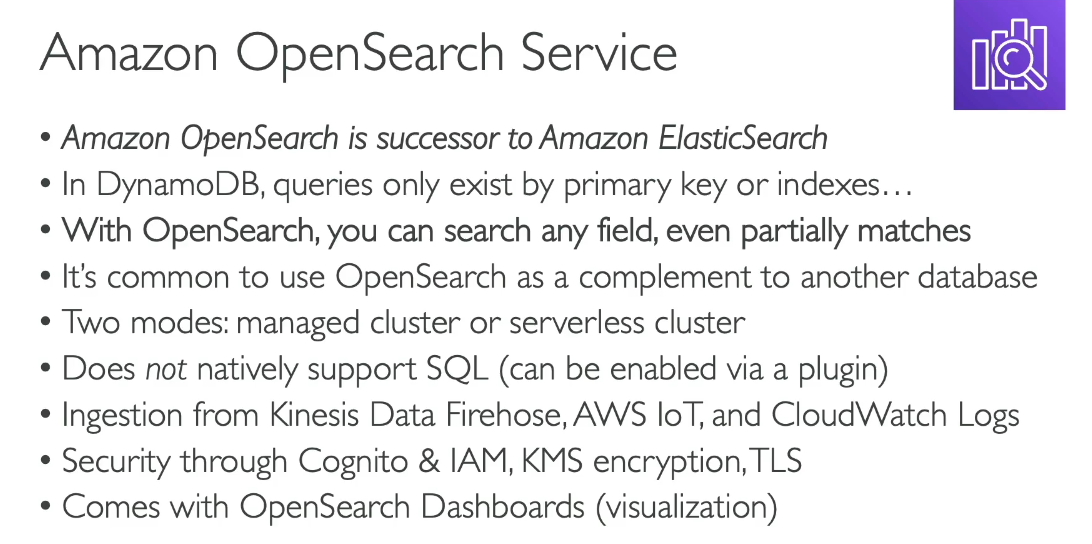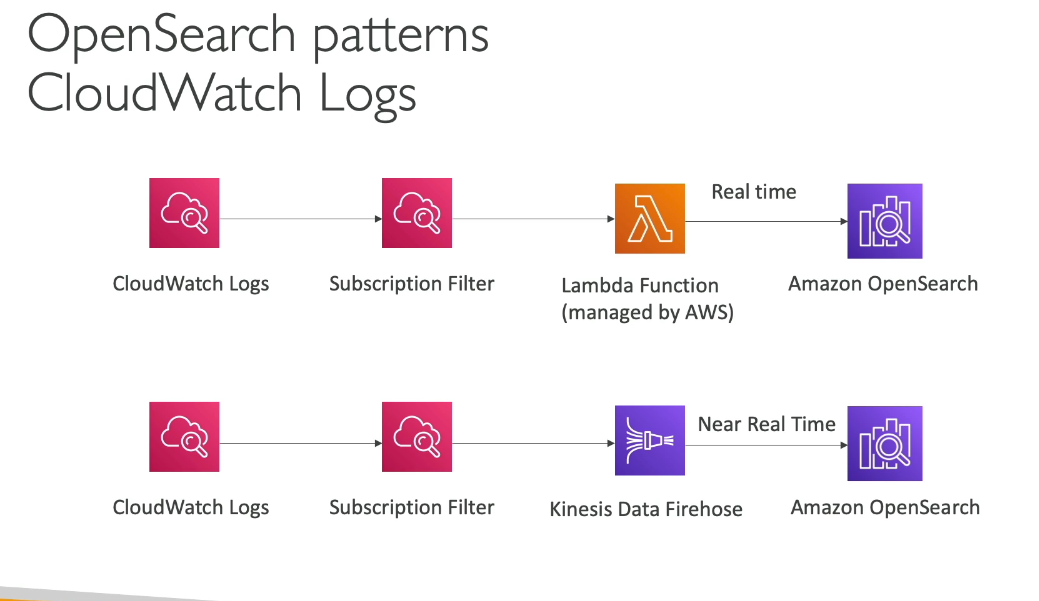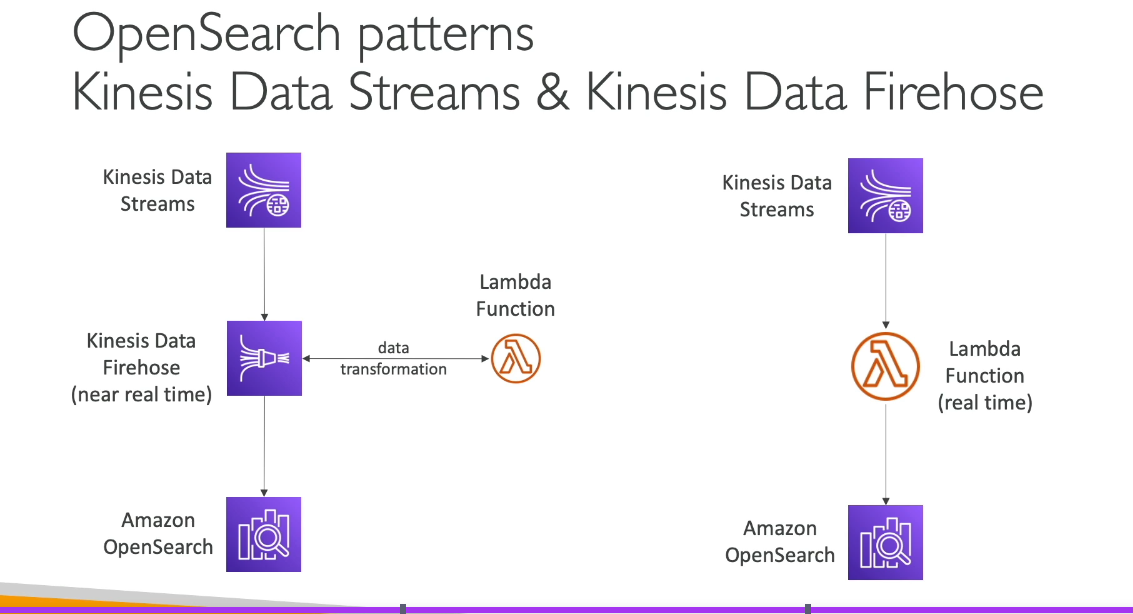Amazon OpenSearch Service (formerly Amazon Elasticsearch Service) is a fully managed service that makes it easy to deploy, operate, and scale OpenSearch clusters for searching, analyzing, and visualizing your data in real-time. OpenSearch is an open-source, distributed search and analytics engine designed for handling large volumes of data with low-latency queries.
OpenSearch is commonly used for a variety of applications, including log analysis, full-text search, real-time analytics, and data visualization. Amazon OpenSearch Service offers a fully managed environment where you don’t need to worry about infrastructure management or scaling, as AWS takes care of it for you.
Key Features of Amazon OpenSearch
- Fully Managed:
- Amazon OpenSearch Service eliminates the need for manual management of clusters, nodes, or hardware.
- AWS automatically handles cluster provisioning, software patching, scaling, and backups, so you can focus on using the service rather than managing it.
- Real-Time Search and Analytics:
- OpenSearch is optimized for fast search queries and real-time analytics on large datasets.
- Ideal for use cases that require low-latency searches and rapid data updates.
- Scalable:
- OpenSearch Service can scale horizontally and vertically to handle large amounts of data and high query volumes.
- You can scale your OpenSearch clusters by adjusting the number of nodes or the size of the instance types.
- Support for Full-Text Search:
- OpenSearch is designed to index and search large volumes of text-based data, making it suitable for use cases like search engines, log analytics, and e-commerce search.
- Data Visualizations:
- OpenSearch Service integrates with OpenSearch Dashboards (formerly Kibana) to create rich, interactive visualizations and dashboards for your data.
- It supports data exploration and analysis via graphical interfaces and enables the creation of time-series graphs, pie charts, line graphs, and more.
- Security:
- IAM Integration: Use AWS Identity and Access Management (IAM) to securely control access to your OpenSearch clusters.
- Encryption: Data is encrypted at rest using AWS KMS (Key Management Service) and can be encrypted in transit with SSL/TLS.
- VPC Access: OpenSearch Service supports VPC (Virtual Private Cloud) access, providing enhanced security for your data.
- High Availability and Durability:
- Amazon OpenSearch Service offers multi-AZ (Availability Zone) deployment to provide high availability and fault tolerance.
- Automated backups and snapshot functionality ensure durability of your data.
- Integration with AWS Services:
- OpenSearch Service integrates with other AWS services such as Amazon Kinesis, Amazon CloudWatch, AWS Lambda, and Amazon S3.
- You can push data from Kinesis Data Streams directly to OpenSearch for real-time indexing and analysis.
- Use AWS Lambda for serverless processing of data streams before sending them to OpenSearch.
- Log and Metrics Collection:
- OpenSearch is commonly used for log analytics, infrastructure monitoring, and application performance monitoring.
- Amazon CloudWatch Logs can be easily ingested into OpenSearch for real-time monitoring.
- Open Source Compatibility:
- OpenSearch is open source and fully compatible with Elasticsearch 7.10 and earlier versions.
- If you’re already using Elasticsearch, you can migrate to OpenSearch with minimal disruption to your operations.
How Amazon OpenSearch Works
- Cluster Management:
- When you create an OpenSearch Service domain, AWS provisions a cluster of EC2 instances, installs OpenSearch on them, and configures them for your data indexing and querying needs.
- OpenSearch automatically handles cluster scaling, patching, and maintenance for you.
- Data Ingestion:
- You can ingest data into OpenSearch via multiple methods:
- Direct indexing via APIs.
- Logstash or Beats for integrating data from logs or metrics.
- AWS Kinesis Data Firehose for real-time data streaming.
- AWS Lambda for processing data before indexing.
- You can also use Amazon S3 to bulk load large datasets into OpenSearch.
- You can ingest data into OpenSearch via multiple methods:
- Data Indexing:
- Data is stored in indices within OpenSearch. Each index is divided into smaller units called shards, and OpenSearch handles distributing these shards across nodes for scalability.
- OpenSearch automatically maintains inverted indices for text-based search and supports full-text search capabilities.
- Querying:
- OpenSearch supports RESTful APIs for querying and managing data. It supports complex search queries such as full-text search, range queries, and filtering.
- Use SQL-like syntax or OpenSearch’s own query language to retrieve and filter data.
- Visualizations:
- OpenSearch Dashboards allows you to visualize your data through interactive charts, graphs, and maps.
- It provides a user-friendly interface for querying data and building dashboards.



